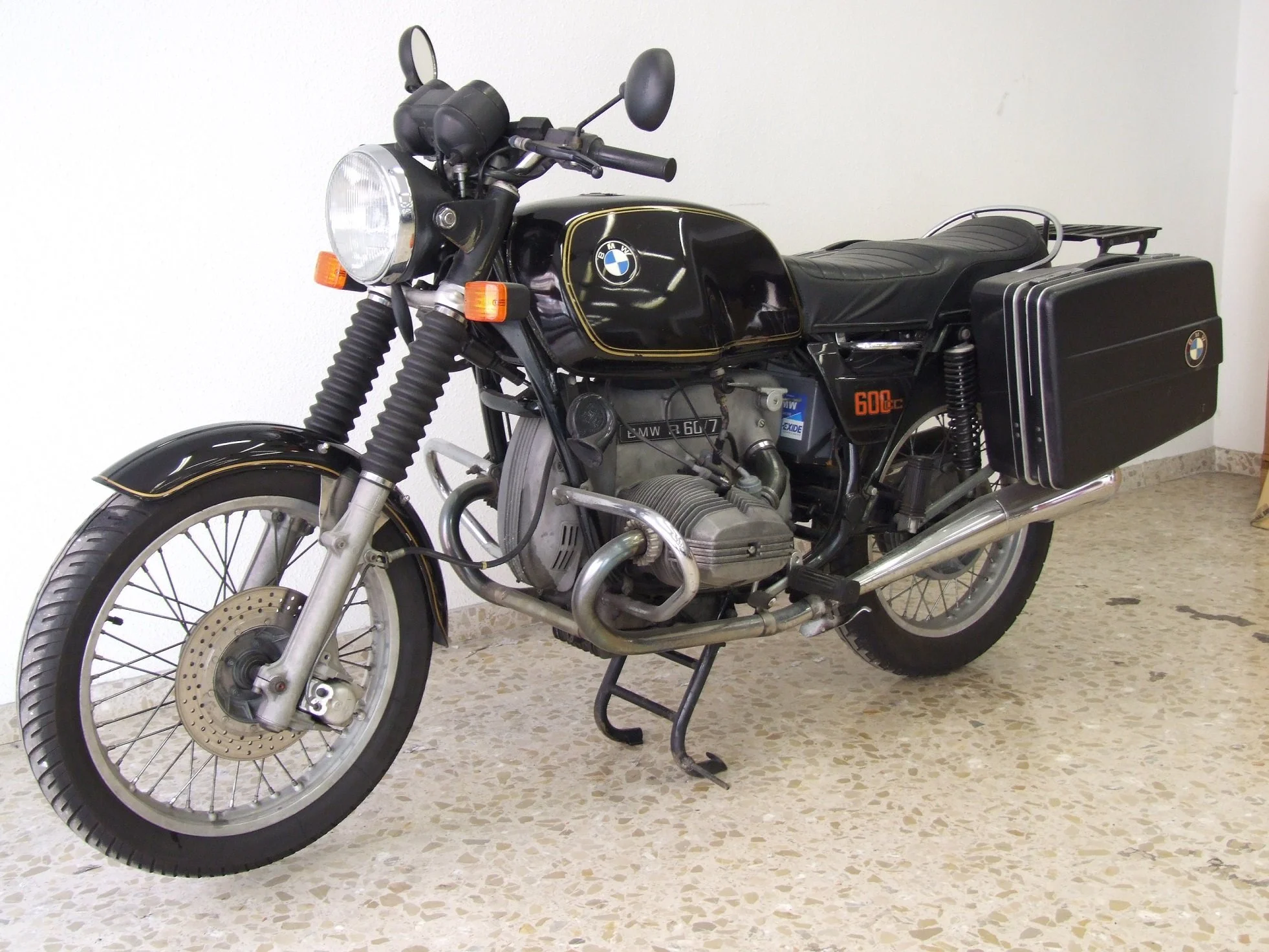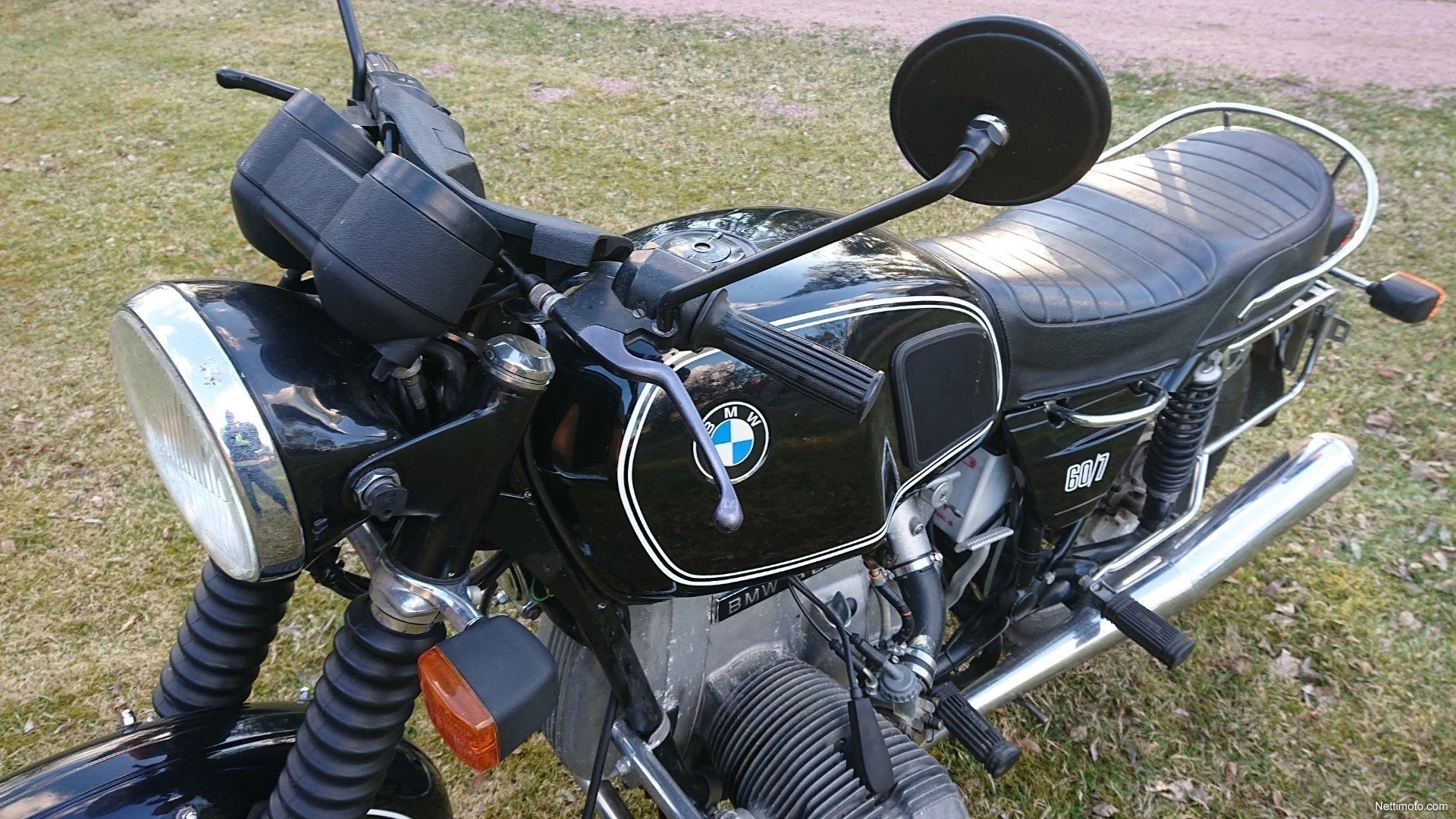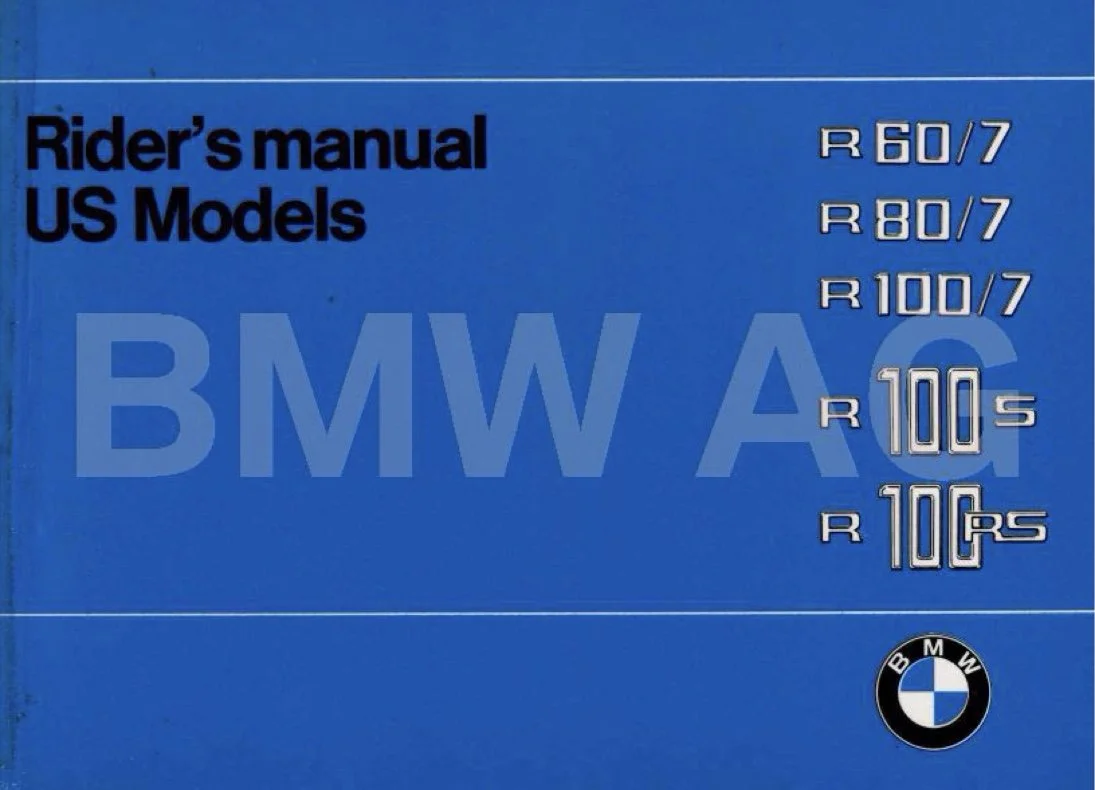With Thanks to 12352 Chris “chwlyms” Willmes (and with apologies to author Robert M. Pirsig)
When I transferred from Royal Roads to RMC, I found myself in the same squadron as fellow Roadent Ted Dillenberg, a.k.a. the Dill. At Roads, we scarcely knew one another; at RMC, we became fast friends. I learned that Ted was an avid motorcyclist, and that he was diligently saving up to buy his dream motorcycle, a brand-new BMW R60/7. He had all the sales brochures, and he knew all of the bike’s specifications by heart. (The motorcycle pictured in the banner above is virtually identical to Ted’s dream machine.) The stereo cassette deck he planned to install on his new machine sat on top of the chest of drawers in his room, wired up to a motorcycle battery so that he could listen to his favourite bands, i.e., Heart and Boston. Ted decided that I needed to become a motorcycle enthusiast, too, and he began an unrelenting programme of indoctrination, which included a promise to teach me how to ride once he took possession of his new machine.
This view of a motorcycle similar to Ted’s shows the “family-jewels-friendly” gas cap featured on /7 and later BMWs.
There were no BMW motorcycle dealerships in Kingston; the nearest ones were located in Montreal and Toronto. Ted opted to buy his machine from McBride’s Cycle in Toronto, and at Thanksgiving he hopped a bus to Hogtown, and ordered his bike from that shop. It would be delivered to the shop early in the new year, and once it had arrived and the initial set up was done, Ted could arrange a date to return to the shop and collect it.
By the end of March, Ted couldn’t wait any longer. So, despite the fact that it was still essentially winter and the weather was less than ideal for motorcycling — daytime temperatures were in the single digits, and there was still snow on the ground — Ted hopped another bus to the Big Smoke, went to the shop, handed over a large wad of cash, collected his bike, and rode back to Kingston, all in the same day. He arrived back at the college after sunset, suffering the incipient stages of hypothermia. Once he had thawed out sufficiently to speak, he bade me come take a look at his BMW. And it truly was a lovely piece of machinery, much more refined than the few motorcycles I had previously encountered.
One of the improvements of the /7 series of motorcycles over their predecessors was a redesigned gas cap. Older BMWs had conventional, hinged gas caps. They were both functional and stylish, but in the event of a rapid unintentional deceleration such as would launch the rider over the handlebars, there was a distinct possibility of injury to the male anatomy. To prevent the gelding of future riders, BMW fitted their latest motorcycles with a flush-mounted cap with a folding handle, that screwed into the filler neck of the gas tank.
My motorcycle instruction began the very next evening, and continued for every evening of the following week. The Saturday after Ted brought his bike to the college, he and I were headed out for an afternoon lesson. We went out to the quadrangle between Fort Champlain and Fort Haldimand where cadets were allowed to park their motorcycles, uncovered Ted’s bike, and under Ted’s critical eye, I preformed the rigorous pre-flight inspection that he had drilled into me at previous sessions. Satisfied that I had neither missed a step, nor performed a step out of sequence, and that the bike was in all respects ready, Ted straddled the bike and eased it off its centre stand. He rocked the bike from side to side to gauge the quantity of gas in the tank by the sound of the gas sloshing around. (Motorcycles didn’t have gas gauges back then.) There wasn’t much sloshing to be heard, and Ted allowed as how the tank must be nearly empty, which was not surprising given that he had ridden from Toronto to Kingston, and had taken me out riding several times, all on the original tank of gas provided by the dealer. (BMWs were touring machines vice pavement-rippers, therefore they had larger gas tanks than most other motorcycles. The R60/7’s tank had a whopping twenty-four litre capacity, and the forty hp, six hundred cc boxer-twin engine delivered excellent fuel economy. All the same, the machine was getting close to its nominal five hundred kilometre range.) Ted decided to remove the gas cap and have a look inside the tank, to better gauge just how much gas was left. So he flipped up the handle and started twisting it. With every full turn there was a small click, but the gas cap wasn’t unscrewing from the tank as it ought to have done. Ted spun the cap several times, with the same result. He tried spinning it in the opposite direction; again, no luck. He tried pulling up on the handle while he was twisting it. Still no joy. Stymied by what should have been the most simple of operations, we paused to consider the situation. We decided to consult Booner. He owned an older R75/6, and was thus the college’s de facto BMW guru. I dashed up to Booner’s room, explained our predicament, and asked him to come take a look. Booner was more than happy to oblige us novices. However, after a few minutes of trying to unscrew the gas cap without success, he admitted that he, too, was stumped. He opined that the cap might be defective in some way, and suggested that we might insert the blade of a screwdriver between the flange of the cap and the filler neck of the tank, and try levering the cap upwards while spinning the cap. Ted was both shocked AND appalled by this suggestion of a crude, brute force approach to solving a problem with his exquisite (and expensive) example of German precision engineering. Ted expressed his disapproval of Booner’s suggestion rather curtly, and Booner responded in exactly the blunt, earthy sort of way you would expect Booner to respond. We were at an impasse. Then I recalled that there was another motorcycle maestro whose assistance we might solicit, i.e., fellow Roadent John Heinrichs. Despite his Teutonic patronymic, John eschewed German machinery in favour of motorcycles of British manufacture. He had had a beater of a Triumph while at Roads, and like the Dill, was saving up to buy his own dream machine, a Triumph T140 Bonneville. (Later that same spring, his new bike would be delivered to the college, still in its factory crate. He put the bike together himself!) John was also frustrated by the recalcitrant gas cap, but he did have a suggestion to which Ted was more amenable than that proffered by Booner: call the bike shop. Why hadn’t we thought of that?
the gas cap that confounded us all
Ted and I trotted back to our rooms in Fort Lasalle, Ted to get the telephone number of McBride’s, and me to get a pile of quarters that would be necessary for the long-distance call. From the pay phone down in the basement, Ted dialled the shop’s number, and was quickly connected with the service department. I was standing next to Ted, and he was holding the telephone handset such that I could hear both sides of the conversation. Ted explained the situation with the gas cap, and he may have expressed some displeasure with what appeared to be a defect in his brand-new motorcycle. The mechanic asked, “won’t the key turn in the lock?” Ted and I looked at one another, wordlessly; then Ted echoed, rather timorously, “the key?” The man laughed so hard, and for so long, that I was sure he was going to have a coronary. After several seconds of uninterrupted laughter, Ted hung up the phone. We returned to the quadrangle where Ted inserted the key in the slot of the gas cap, the slot that somehow escaped the notice of Ted, me, Booner, and John. Ted turned the key a quarter-turn, then flipped up the handle, and started twisting the gas cap. And the cap spun out of the filler neck just as readily as the engineers at Bayerische Motoren Werke had intended.
Some time after this debacle the thought occurred to me that we might have avoided all of this sturm und drang had we thought to look in the BMW rider’s manual, conveniently stored under the bike’s saddle. It was a comprehensive reference that documented all manner of maintenance procedures like setting the valve clearances, bleeding the brakes, etc., etc. — totally unlike the manuals that accompany today’s motor vehicles, which mostly caution the owner/operator not to drink the contents of the battery. But I decided that it would be more politic to keep that thought to myself.
The last word, er, acronym: RTFM.



